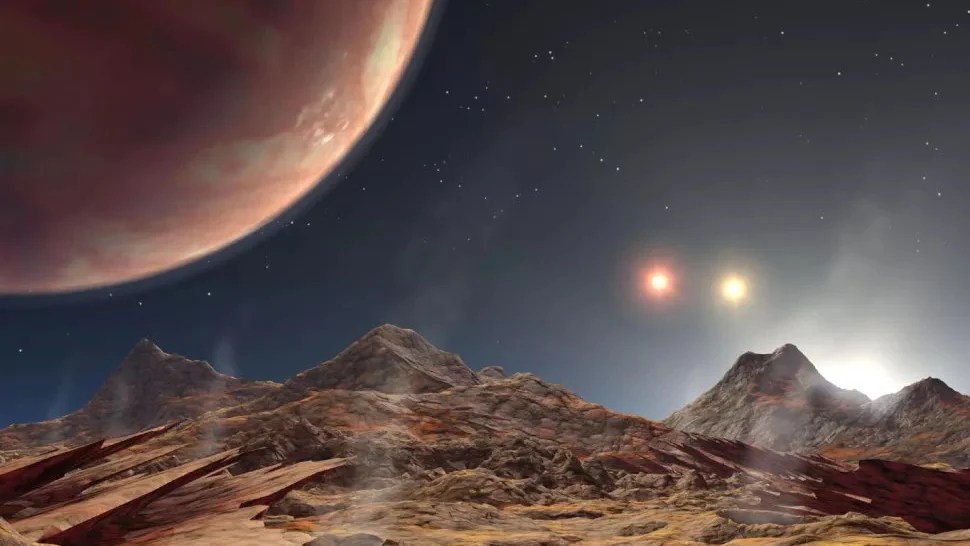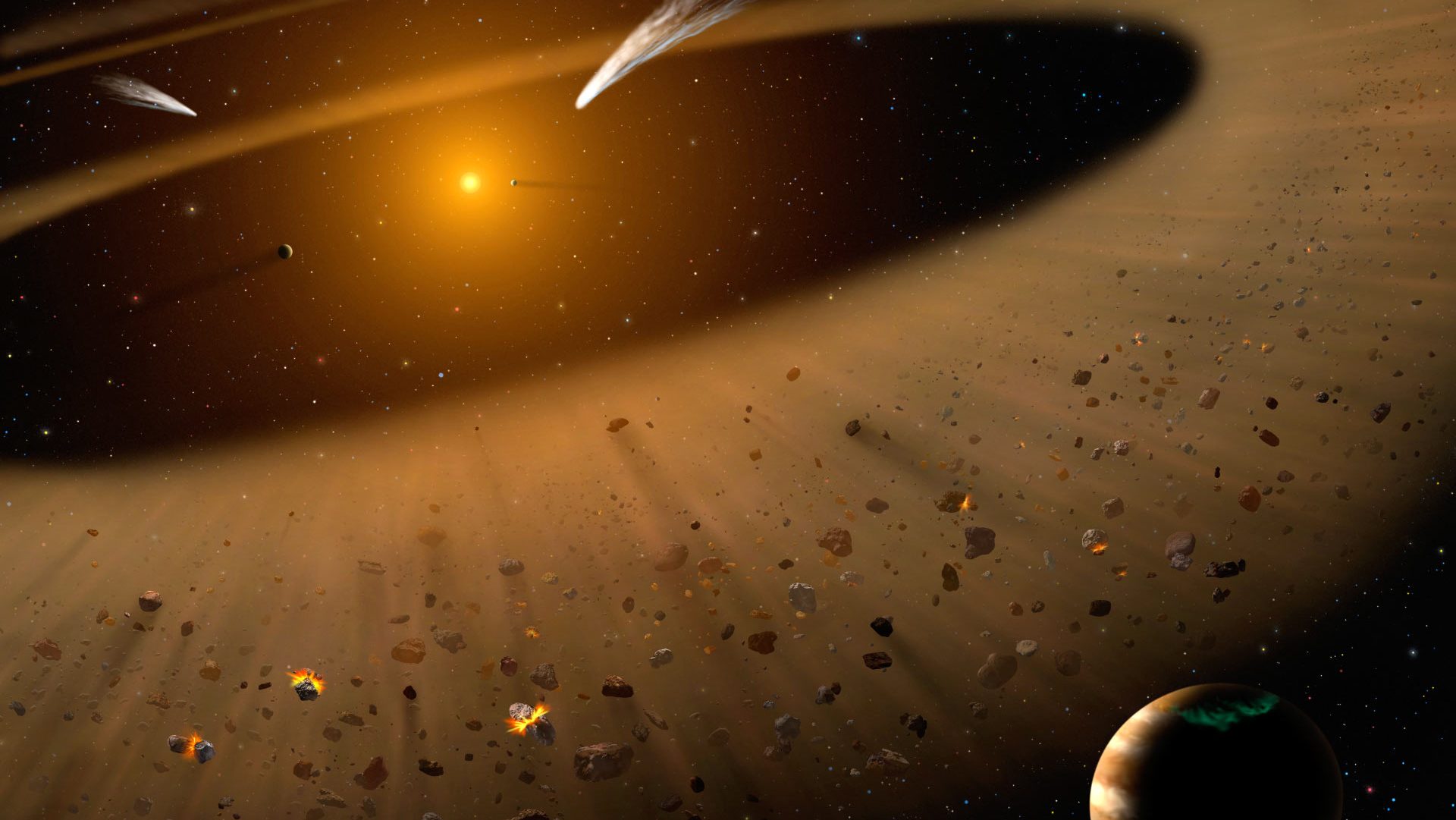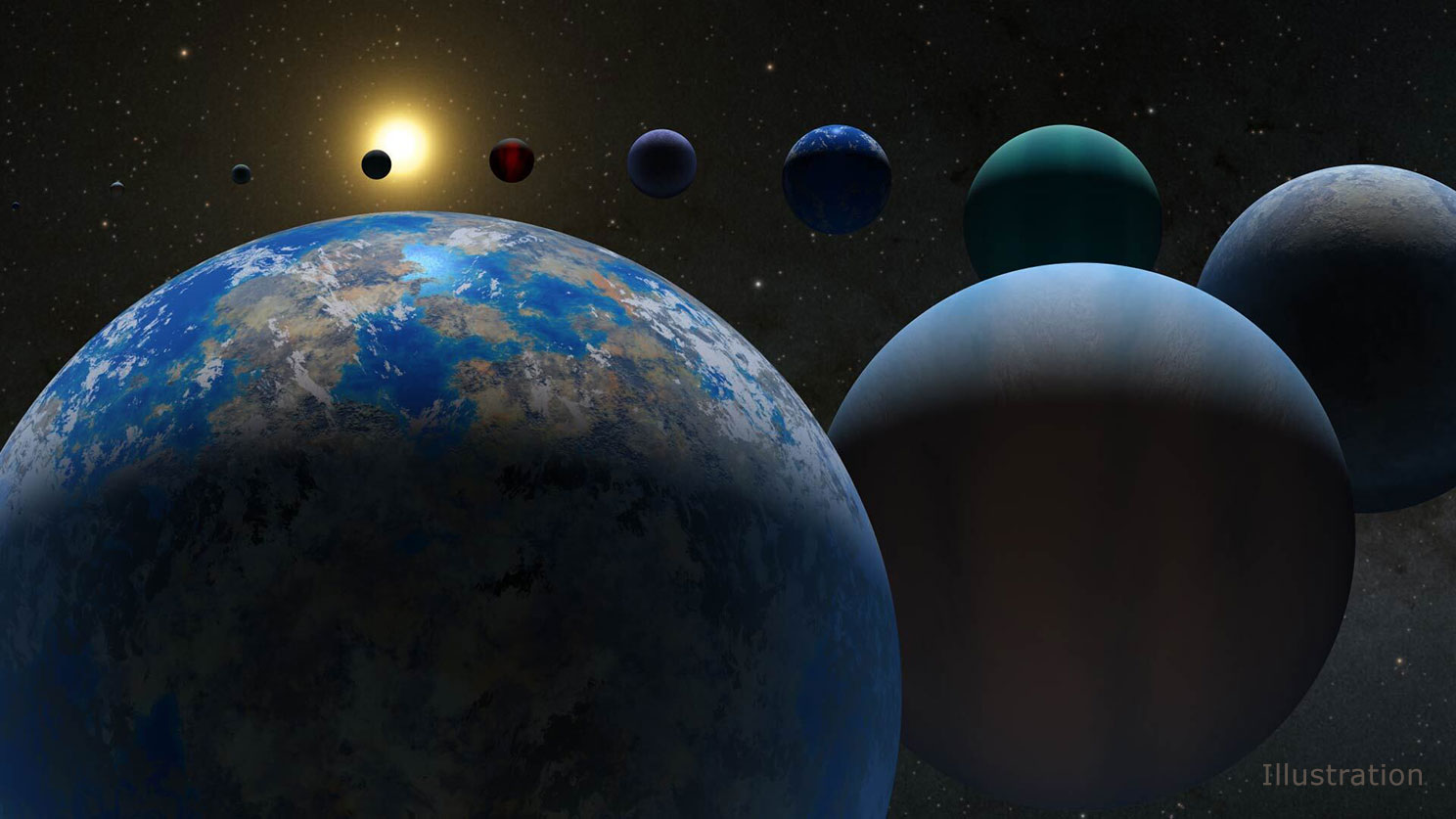Astrophysicists find rare star spinning backwards

Illustration: Christoffer Grønne.
- Astrophysicists find a very rare system with two exoplanets orbiting their star backwards.
- The star system K2-290 is 897 light years away.
- In our Solar System, all the planets revolve in the same direction as the rotation of the Sun.
Astrophysicists discovered a very rare planetary system 897 light years away which features two exoplanets orbiting their star backwards. This unexpected arrangement is due to the tilting of the protoplanetary disk in which the planets were formed.
The researchers found that the two planets in the K2-290 system orbit around the star in almost the opposite direction as the star’s rotation around its own axis. In our Solar System, by comparison, all the planets revolve in the same direction as the rotation of the Sun. K2-290 A’s rotational axis is tilted by approximately 124 degrees in contrast to the orbits of the planets.
The international research team was led by Maria Hjorth and Simon Albrecht from the Stellar Astrophysics Centre of Aarhus University in Denmark, and also involved scientists from Princeton University, Pennsylvania State University, University of Toronto, and Tokyo Institute of Technology.
This actually isn’t the first time a “backwards” planetary system like this has been spotted. One was sighted over 10 years ago. But, as one of the study’s authors Joshua Winn from Princeton University explained in a press release, “this is a rare case in which we think we know what caused the drastic misalignment, and the explanation is different from what researchers have assumed might have happened in the other systems.”

A protoplanetary disc was twisted almost 180° before planet formation. Illustration: Christoffer Grønne.
The unusual formation of the planets was caused by the protoplanetary disk – a disk of material that spins around a young star for several million years after the star’s birth. Normally, this spin is going in the same direction as the star but the gravitational force from a neighboring star can tilt the disk, which is what happened in this case.
Another author, PhD student Emil Knudstrup from Aarhus University, shared what drew him to this work:
“The idea that planets travel on wildly misaligned orbits has fascinated me throughout my graduate study. It is one thing to predict the existence of these crazy orbits, so very different from what we see in the Solar System. It is quite another thing to participate in actually finding them!”
Check out the paper “A backward-spinning star with two coplanar planets” published in the Proceedings of the National Academy of Sciences (PNAS).





